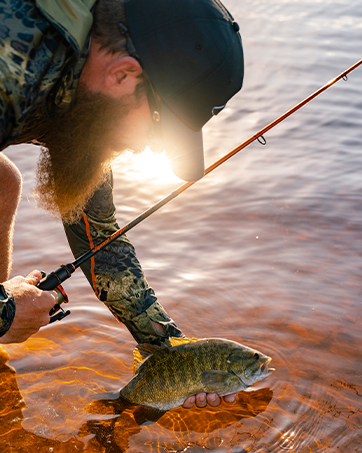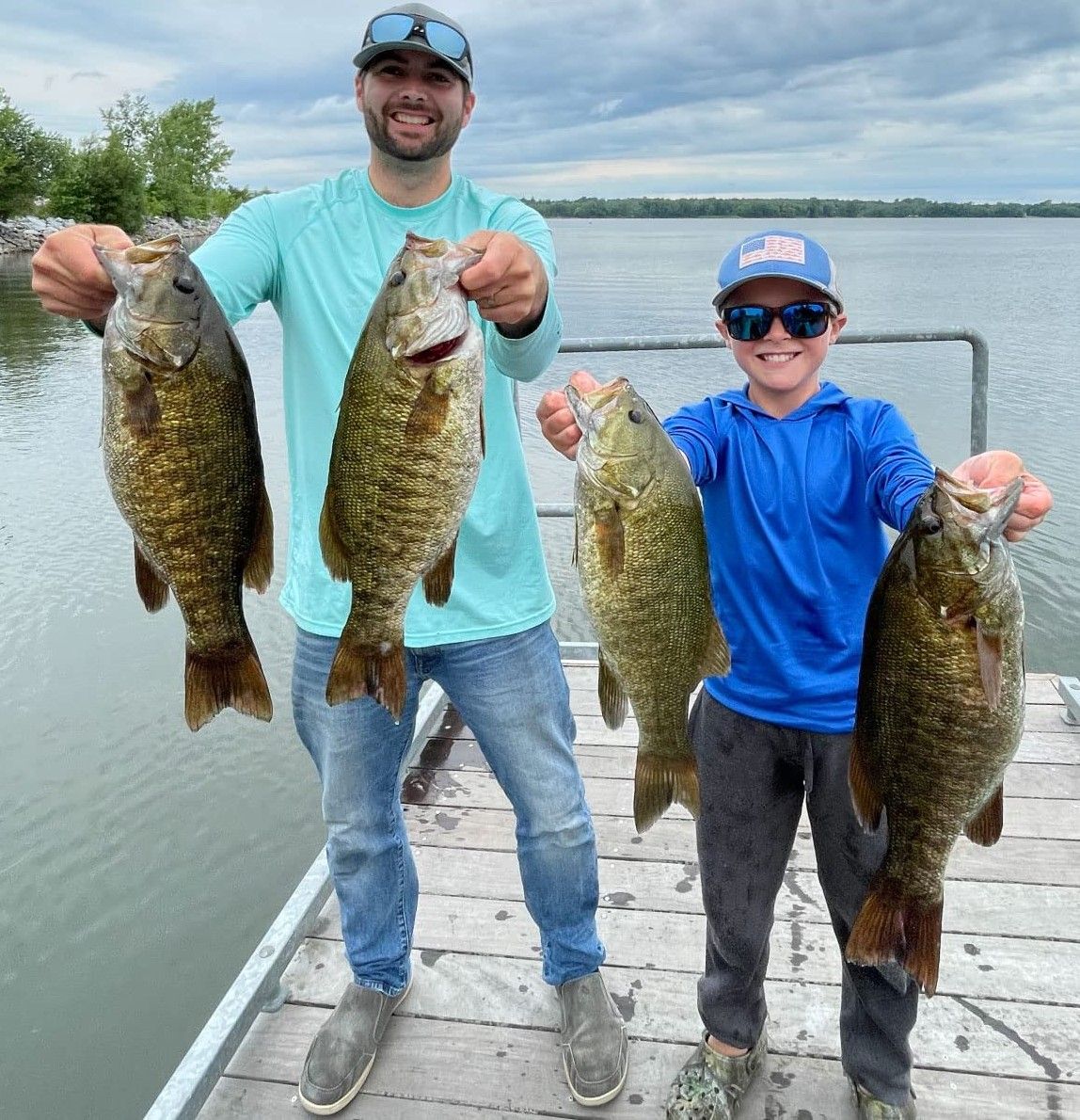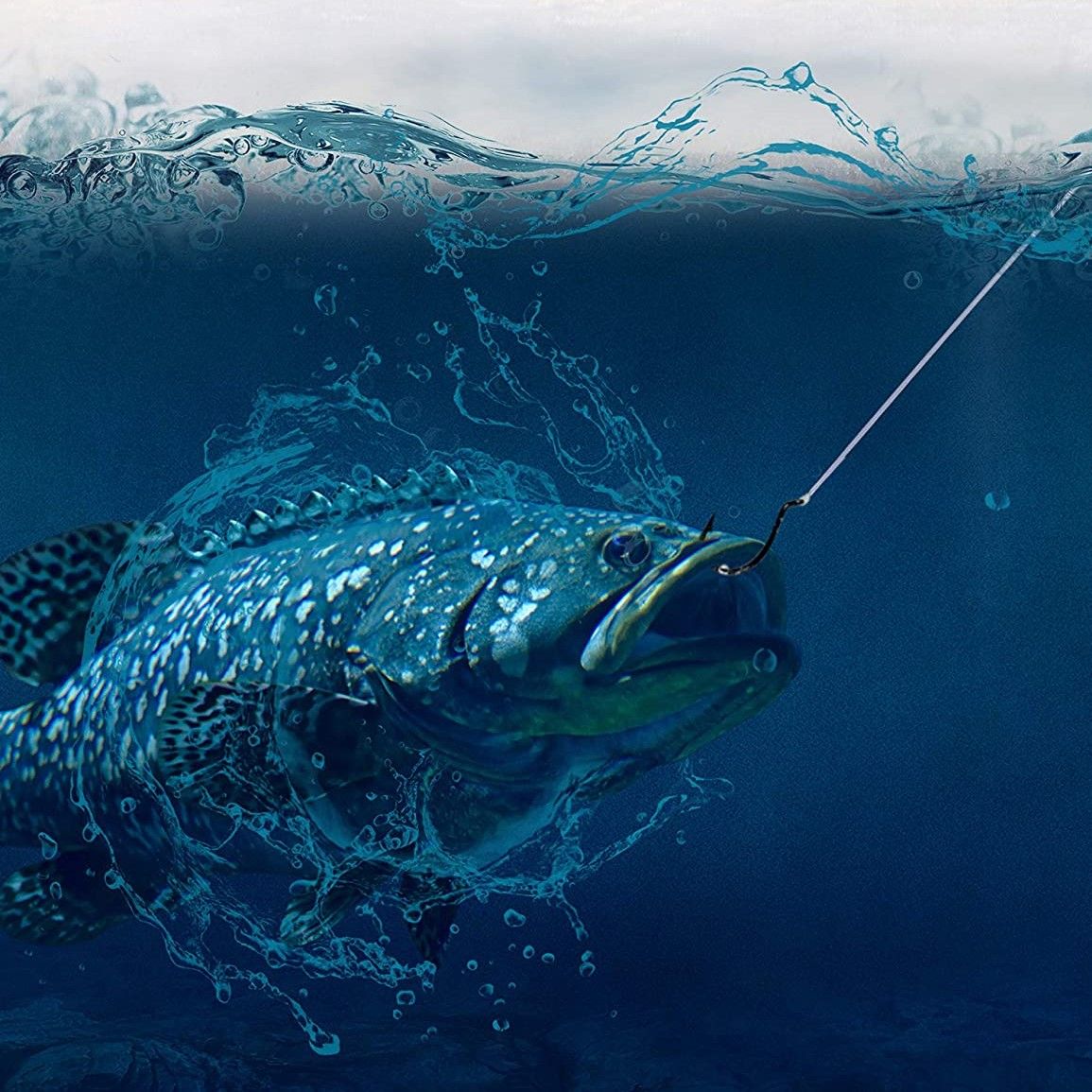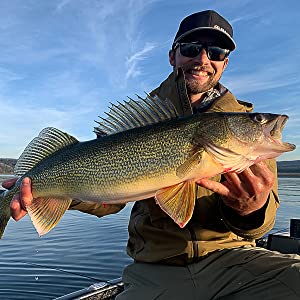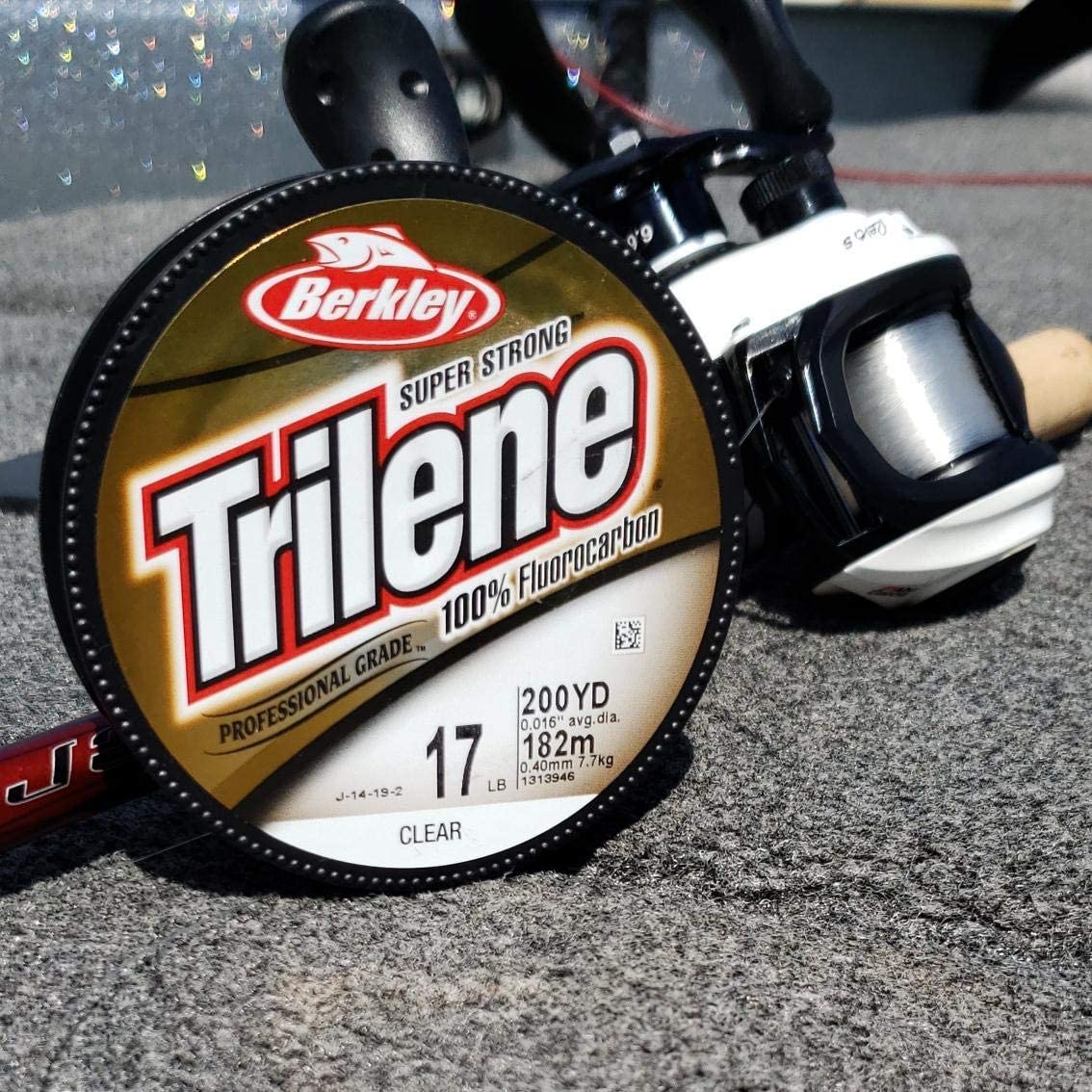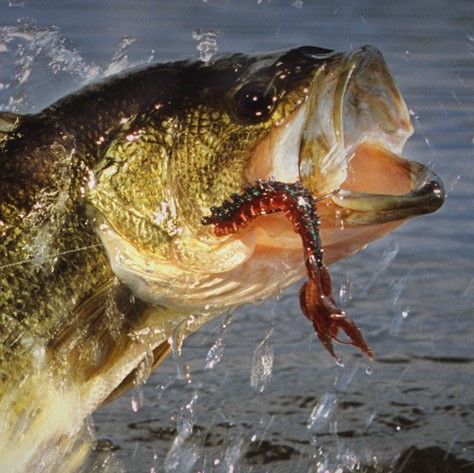Are you an avid bass fisherman looking for the best fishing line for your next trip? Look no further! We’ve got you covered with our comprehensive review of the best fishing lines for bass.
From monofilament to fluorocarbon to braided lines, we’ll help you find the perfect line for your next big catch. We’ll go over the pros and cons of each type of line, so you can make the best decision for your needs. We’ll also share some tips and tricks on how to tie knots and attach lures for maximum success.
We’ll also review the best brands and products on the market, from budget-friendly options to more expensive ones. Whether you’re looking for a line that’s strong and durable or one that’s sensitive and casts far, we’ve got you covered.
So get ready to make your next fishing trip a success with the best fishing line for bass! With our help, you’ll be sure to make the biggest catch of the day! Read on to find out more about the best fishing lines for bass and get ready to reel in the big one!
How We Choose Fishing LIne
Bass fishing is one of the most popular types of fishing in the U.S., but bass anglers may find it hard to find the right type of line for their needs.
Do you want a line that is strong and reliable or one that is more sensitive so you can detect even subtle bites? Our team of experts has read thousands of reviews on Amazon to find the best fishing lines for bass so you don't have to.
We've done all the hard work so that you can easily find and purchase the perfect line for your next bass fishing trip. No more guesswork. No more wasted money. Just the perfect line for your needs! Check out our reviews today and start catching those big bass!
Why We Love It:
KastKing FluoroKote Fishing Line is the perfect choice for anglers who want the invisibility of fluorocarbon with the low cost and great castability of the copolymer. Thanks to its unique materials, KastKing FluoroKote Line sinks faster with low absorption, is extremely durable with great knot strength, and offers superior abrasion resistance.
Plus, KastKing FluoroKote is thinner than traditional monofilament, which means it offers more reel capacity and increased depth with diving baits.
What You Should Know:
KastKing FluoroKote Fishing Line is the perfect choice for anglers of all levels. Whether you’re a beginner or a pro, KastKing FluoroKote will give you the performance and durability you need.
This KastKing line is also low stretch, high strength, and features low memory. So you can cast accurately and get the maximum performance out of your gear.
Plus, you can enjoy all these features without having to pay a premium price. If you’re looking for a great and affordable fishing line, KastKing FluoroKote is a perfect choice!
Why We Love It:
Tailored Tackle Bass Fishing Line was designed by a nationwide team of fishing guides and experts for smallmouth and largemouth bass lures of all sizes and styles. This Low Visibility Gray Night color is the perfect balance in clear or dingy water, giving you an invisible line underwater at a heavier test. The 20-pound breaking strength has an ultra-thin 0.18 mm diameter that is smaller than our competitors at the same strength. The abrasion-resistant bass line has zero stretch with a superiorly thin diameter for precise, long-distance casting and sensitive bite indication. With 400 yards of line, you can fill two bass baitcasting spools or two spinning reel spools in 2000 to 4000 size, making it perfect for either left or right-handed bass baitcasting rods and reels.
What You Should Know:
Tailored Tackle Bass Fishing Line is sure to be a hit with even the most seasoned anglers. It's designed to hold up in dirty water and offers an unbeatable combination of strength and sensitivity. Plus, the abrasion-resistant line won't fray or wear out easily, making it a great value for your money. Whether you're a beginner or an expert, Tailored Tackle Bass Fishing Line is sure to help you land the big one!
Why We Love It:
RUNCL PowerMono Fishing Line is the ultimate strength line for anglers who want to land the biggest fish! It is very easy to tie and allows for a perfect knot seat to avoid breakage or slippage. Plus, it is constructed from low-density material for neutral buoyancy, meaning it sinks slowly and actually suspends in water, making it a huge advantage when fishing topwater baits and buoyant treble-hooked lures. It also features a certain degree of stretch, acting as an effective shock absorber when a big fish hits your line hard.
What You Should Know:
RUNCL PowerMono Fishing Line is available in both low- and high-vis options to match any fishing condition you will encounter. Clear and Low-Vis Green are always solid choices, and with Hi-Vis gold for nymphing or aging eyes. Plus, the PowerMono's amazing strength allows it to withstand sudden, aggressive strikes and deliver solid hooksets. It also provides excellent shock strength, abrasion resistance, and knot strength for maximum castability and helps keep hooks where they need to be when bass ‘throw’ the lures during the fight, helping with the success of hook-up. So why wait? Get your own RUNCL PowerMono Fishing Line today!
Why We Love It:
Seaguar Tatsu Fishing Line is a must for every rod and reel, trusted by today’s hottest pros and anglers of all species. This world-renowned fluorocarbon mainline is the only double-structure fluorocarbon mainline, delivering amazingly strong, yet supple performance. It's soft, supple, and smooth casting with exceptional sensitivity, low memory, virtually no stretch, fast sinking, and superior knot strength for unmatched performance — in almost any condition. It's a great choice for anglers who use one or two rod/reel set-ups to fish a variety of species.
What You Should Know:
Seaguar Tatsu is ideal for freshwater multi-species fishing applications — fish can’t see it and it’s very soft and sensitive, easy to manage on a reel. With very low stretch, it’s extra sensitive and helps improve your catch rate with your favorite finesse presentations. The exclusive double-structure process fuses two 100% fluorocarbon resins into one solid line that offers the best combination of strength & castability. Seaguar Tatsu Fishing Line also offers superior knot strength, so you can feel confident that your line won’t fail you in any situation. Catch Bass, Walleye, Panfish, and more with confidence. Get your Seaguar Tatsu Fishing Line today and experience world-class performance!
Why We Love It:
If you’re an avid angler, then you’ll love the Berkley Trilene 100% Fluorocarbon Fishing Line. This professional-grade fluorocarbon has superior shock strength, knot strength, and abrasion resistance so you can feel the bite and set the hook with confidence. It’s fast-sinking with a greater line density that gives you the highest sensitivity and allows for less “bow” in the water. Plus, it is nearly invisible and has a similar refractive index to water, meaning that fish won’t be able to see it.
What You Should Know:
The Berkley Trilene 100% Fluorocarbon Fishing Line is an excellent choice for spinning reels and drop shot rigs. It’s also great for fishing jerk baits as it has lower memory for superior casting. This fishing line is available in multiple break strengths and is made from a proprietary 100% PVDF formula that is specially processed for optimal impact strength. So why wait? Get the Berkley Trilene 100% Fluorocarbon Fishing Line today and land more fish!
Why We Love It:
TRUSCEND X8 Tournament Braided Fishing Line is a must-have for all tournament fishing fans! This line is extremely sensitive and allows you to cast farther, feel the slightest bites even with heavier lines, and have the confidence to land any large fish in rugged conditions. It also has the ability to cut through some types of underwater aquatic plants when playing a strong fish, an enhanced ability to feel debris on a line, hook, or lure, and the ability to sense the action of certain types of lures.
What You Should Know:
Tournament anglers will love this braided fishing line as it has little to no stretch- ensuring you can set the hook much faster and easier than with mono- and is much smoother and softer than other coated braids. It also has zero memory, so the traditional line twists you get in mono lines are no more. Plus, it is supple and can spool a significant amount of line on a smaller reel, making it perfect for getting bass out of thick cover, getting certain lures deeper, and trolling plugs. So why wait? Get your own TRUSCEND X8 Tournament Braided Fishing Line today!
Why We Love It:
Reaction Tackle's braided fishing line offers incredible abrasion resistance for people fishing braided line rigs in situations with logs and rocks. This premium braided fishing line is engineered from ultra-high molecular weight polyethylene, one of the strongest woven fibers on earth. It is designed to be super tough and withstand the most demanding conditions. You can sense every nibble and strike with Reaction Tackle’s braided fishing lines, which have a compact weaving that lets you feel what’s happening underwater.
What You Should Know:
Reaction Tackle’s pro-grade braided fishing line is the perfect choice for serious anglers who care about quality tackle. It is one of the best braided fishing lines for all types of conditions and is ready to go wherever the adventure takes you. Whether you’re fishing in freshwater or saltwater, you can rely on Reaction Tackle’s braided fishing line to meet your needs. Plus, it’s available in a variety of lengths, weights, and colors, so you’re sure to find the perfect one for your fishing style. So don’t wait - get your Reaction Tackle Line today!
Bass Fishing Line FAQs
If you're a bass fisherman, you know that having the right fishing line is essential to success. But with so many different types of fishing lines on the market, it can be hard to know which one is best for catching bass.
We understand how frustrating it can be to find the perfect fishing line for bass, so we've compiled a list of the most frequently asked questions about the the right fishing line for bass so you can make an informed decision.
By arming yourself with the right information, you can be sure to find the best fishing line for bass and make every fishing trip a success.
What is the best line to use when fishing for bass?
The best line to use when fishing for bass is a monofilament or fluorocarbon. Monofilament lines are great because they have high tensile strength, allowing them to withstand the pressure of big fish and provide adequate shock absorption. They also tend to be more abrasion resistant than other types of lines, making them ideal for rocky bottoms and harsh conditions.
Fluorocarbon lines offer similar advantages while also being nearly invisible when submerged in water, which can be beneficial if you plan on fishing during low-light periods.
Additionally, choosing the right weight and diameter of your line is key - heavier lines can hold up better against larger fish while thinner lines will cast further with lighter lures.
How do I choose the best fishing line for bass?
Choosing the best fishing line for bass depends on what type of bait you are using, the water conditions, and your personal preference.
Generally speaking, braided lines are the most popular choice when it comes to bass fishing because they can handle harder wear, while monofilament is more economical. Braids provide great strength, sensitivity, and low stretch. They also sink faster than other lines due to their denser construction.
Monofilament is less expensive than braided lines but lacks some of its features since it stretches more easily and can be affected by water temperature changes over time resulting in a reduction of power and clarity in your presentation.
Fluorocarbon has become increasingly popular among anglers due to its invisibility underwater as well as its abrasion resistance compared to other lines like monofilament or braid. It's also known for being very sensitive with nearly no stretch at all which helps anglers detect even the lightest bites from a fish.
Whichever line you decide upon for bass fishing should depend on your style of fishing; whether you will be throwing baits closer in or from further away etc., this way you have an idea of what weight test line fits your circumstance better so that you can maximize casting distance and power depending on lure size/weight used versus drag capabilities needed during a battle with any given fish species.
What is a braided fishing line?
A braided fishing line is a type of strong, durable fishing line made from multiple strands of material (usually nylon or polyethylene) that are tightly wound together into a single line. This creates an incredibly strong, thick line that is resistant to abrasion and offers anglers more control over their tackle.
Additionally, the lack of stretch in braided lines makes them ideal for deep-sea and offshore angling. Braids come in different lengths and strengths depending on the needs of the fisherman and can last much longer than other types of fishing lines due to their resistance to UV damage caused by exposure to sunlight.
What is a fluorocarbon fishing line?
A fluorocarbon fishing line is composed of a single material, fluoropolymer which is designed to be highly durable and provide consistent performance in saltwater and freshwater environments.
It offers low stretch properties for increased sensitivity, giving you an extra advantage when detecting light bites or strikes in your line. It also has excellent abrasion resistance so it won't easily damage or break after being exposed to rough surfaces like rocks or logs.
Furthermore, it's largely invisible underwater due to its refractive index making it more difficult for fish to detect. Overall, the use of a fluorocarbon fishing line is the ideal solution for experienced anglers looking for top performance out on the water.
What is a monofilament fishing line?
A monofilament line is a type of fishing line made up of a single, thin strand of material. This type of line is most commonly used in recreational and commercial fishing applications, as it provides superior strength and flexibility.
Monofilament lines are available in a variety of weights and lengths to fit any situation or species sought after. The most common materials used to make monofilaments are nylon, fluorocarbon, copolymer, and braid. Each has its unique characteristics including weight, stretchability, abrasion resistance, knot strength, and visibility.
By having the ability to customize the types of material you use for different situations anglers can optimize their rigs for maximum efficiency!
What are the pros and cons of using a braided fishing line?
The pros of using a braided fishing line are as follows:
- Braided lines have superior strength and abrasion resistance, making them ideal for situations where they may come into contact with rocks or objects at the bottom of the water.
- They also have much lower stretch and higher sensitivity than monofilament lines, which means you can better feel the subtle strikes and tension on your rod tip.
- Another benefit is that because of the thin diameter, you get more line on your reel when compared to mono or fluorocarbon lines. This means more casting distance, less drag in strong currents, and generally easier handling all around.
On the other hand, there are some cons to consider when it comes to using a braided fishing line:
- Braids tend to be far more expensive than traditional monofilament or fluorocarbon lines due to their higher-quality construction.
- They can also be quite difficult to manage since snags and tangles can be nearly impossible to work out if not handled carefully.
- Additionally, some worry about visibility since brightly colored strands may spook line shy fish in clear waters of your presence though this concern is typically overblown depending on personal preferences.
What are the pros and cons of using a fluorocarbon fishing line?
Pros:
- A fluorocarbon line is made up of a material that is incredibly strong and durable, making them perfect for catching larger fish or in more rugged conditions.
- They are much less visible than other types of fishing line, which makes it harder for the fish to see your line and detect any sudden movements you may make while casting your bait or lure.
- Because fluorocarbons do not absorb water as quickly as many other materials used in fishing lines, they tend to remain flexible even when wet – this makes them great at handling extreme conditions such as cold temperatures or strong currents without losing their strength or flexibility.
- Fluorocarbons also have a higher breaking strain than some other materials so you can confidently use them with heavier weights and larger baits without worrying about line breakages!
Cons:
- One drawback of fluorocarbon lines is that they are typically more expensive than mono-filament alternatives, so if budget is an issue then mono may be a better option for you depending on what type of fishing you're doing and how often you'll be out on the water!
- Additionally, some people find fluorocarbon lines difficult to manage because it's hard to test the knot strength due to its lack of stretchiness compared with monofilament alternatives - so there’s always potential knot failure when using this type of line which can be an issue if one isn't familiar enough with tying knots correctly (using palm control).
- Lastly, because these types of lines don't float very well on top surface layer waters (like lakes), they aren't often ideal options for floating lures & baits since depth control becomes tricky - another reason why monofilament might be a better option depending on what type of angling/fishing circumstances you're dealing with!
What are the pros and cons of using a monofilament fishing line?
The main pro of using a monofilament fishing line is its affordability. It is usually the least expensive type of line available, making it a great choice for anglers on a budget. Additionally, monofilament lines are generally very easy to cast and retract and tend to have less line memory than other types of lines, which makes them desirable for both novice and experienced fishermen alike.
On the downside, monofilament lines are more prone to tangling and can stretch out over time if not properly stored. They also don't offer much abrasion resistance so they may be easily damaged by rocks or other objects near the water's edge. Furthermore, monofilament lines can become brittle in cold weather conditions and become difficult to use effectively.
Overall, when considering the pros and cons of using a monofilament fishing line one should remember that it is an economical solution that works well for many fish species if carefully monitored - something every angler should consider before selecting their next line!
How do I spool my fishing reel with the best fishing line for bass?
Spooling your fishing reel with the best fishing line for bass is critical for a great day of fishing. Whether you’re spinning or baitcasting, having the right line is essential for bringing in that next catch.
Before spooling, make sure your reel is the correct size and model for the type of casting that you intend to do. Then find an appropriate fishing line for bass such as braid, monofilament, or fluorocarbon; each have their pros and cons depending on what kind of setup works best for you.
When it's time to spool up start by examining your reel blank (the part without any lines) – it should be clean and well-oiled so that it can receive new line smoothly and prevent tangles. Begin attaching one end of the new line to your arbor knot then tie it off securely with a figure 8 knot between two loops on either side; this will ensure tight attachment points on both sides The last step before actually winding up is ensuring that there are no twists in the new line at its connection point – checking this before winding will help avoid any problems later down the road once out on the water.
Once everything seems secure wrap basic overlapping whipping circles around each other as you lay down more wraps until done - making sure not to leave too much slack from wrapping - evenly distribute tension across all wraps when done Finally pull tight one more time just to double check all connections before getting ready to cast into open waters!
How do I tie the best fishing knots for bass?
When it comes to fishing for bass, having the right knot is essential. While many different knots can be used when fishing for bass, the following four knots are considered to be some of the most effective and reliable.
1. Palomar Knot: The Palomar knot is considered one of the strongest and easiest knots to tie when it comes to bass fishing. To tie this knot begin by doubling your line and passing it through the eye of your hook or lure securing a loop in the doubled line. Next, take hold of both ends of your double lines and make an overhand knot across its standing part before continuing around with a second overhand knot - forming two loops before bringing them together at their top point (also known as ‘the rabbit hole’). Finally, trim off any excess loops so you have a neat finish.
2. Clinch Knot: Similar to the Palomar, this basic but very dependable clinch knot is also commonly used when fishing for bass, particularly when using hard baits such as crankbaits or spinnerbaits due to its ability to securely attach lures with solid rings or eyes. To tie this simple but strong knot begin by threading your line through your lure/hooks eye twice before wrapping up five turns diagonally back towards itself before passing through a small loop created above its eyelet where you will pull tight and push the tag end through the final loop formed- completing both tightenings more securely than if done separately
3. Improved Clinch Knot: This variation on the classic clinch can handle larger lures better due increased number of turns applied which helps increase the contact area between doubled sections; giving increased strength against fish pulling on these types of difficult large lures! Begin exactly like a classic clinch but after three initial wraps pass loosely under all remaining turns working in opposite directions along initial twists down the standing part – creating additional friction points further increasing overall reliability during fish fights! Then simply complete by passing the tail/tag end through both the original & newly created loop followed by tightening & snipping any excess material off (optional step) for a cleaner finished product!
4. Double Surgeon's Knot: Ideal one presentation rigs occasions; This versatile double surgeon's capable of attaching multiple lines simultaneously object lessening the effect quickly gaining from tying a single figure eight know each element! Begin similar standard surgeons however making loops twice the length while keeping touch wrap eventually emerging alongside first set lines after six secure passes then finally just simply running loose ends through interior final formation sliding tight completeness - neatly connecting without fail every time need teams secure units?
In Conclusion
Whether you’re a beginner or a professional angler, having the right fishing line can make all the difference when it comes to catching bass. We’ve highlighted seven of the best bass fishing lines that offer a great combination of strength, flexibility, and reliability. From monofilament to fluorocarbon, each line has its own unique set of benefits and is sure to provide the performance you need to land your next big catch.
So go ahead and pick the fishing line that’s right for you and get ready to experience the thrill of bass fishing like never before!




